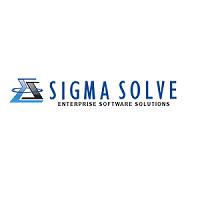Managed Service vs Staff Augmentation: The Core Differences to Consider

The need for competent IT services (or any form of services, really) is always increasing in an unpredictable and dynamically changing corporate climate. The shortage of competent software developers, on the other hand, is a fact that today’s market must face and adapt to.
Fortunately, IT outsourcing comes to the rescue, offering various advantages such as reducing project time and expenses, gaining access to a qualified IT partner’s knowledge base, enhancing operational efficiency, and allowing you to focus on your main business. As a result, an increasing number of businesses are delegating IT tasks to third parties. Startups have the option of choosing between two forms of outsourcing: personnel augmentation and managed services.
There are many various forms of collaboration with a software supplier to select from, but the most prevalent are staff augmentation and managed services. Which one, though, should you pick?
Let’s start by looking at a quick summary of both models.
What are Managed Services?
Simply explained, a managed service is a service that takes care of the day-to-day operations of your specialized applications. A managed service can perform a variety of tasks. To begin, it can give your company’s end-users extra capabilities. It can also free up in-house IT resources to focus on more important IT initiatives. Managed services are also intended to free up your employees to concentrate on the key skills of your company.
When IT specialists see a drop in the existing repository of knowledge, the quality of IT service provided to your firm suffers. This is when managed services are required. A lack of achievement in specific sectors owing to a lack of service, as well as a high volume of service outages and downtime, are further signs that a managed service is required. Startups could also explore managed services if they overspent their budget on performance-degrading changes to business software. Another reason for a managed service might be data loss owing to a lack of solutions.
A managed service may assist both small and large client firms in addressing these issues. Many businesses make use of managed services in a number of ways.
With this in mind, let’s consider how staff augmentation could be a potential alternative.
What is Staff Augmentation?
Staff augmentation is an outsourced alternative for bringing in the capabilities your organization requires at a cheaper cost. Your augmented personnel will be handled directly by your firm as if they were your workers, but with substantially lower hiring and maintenance expenses and responsibilities. Staff augmentation is typically utilized to meet a short-term requirement for a certain resource.
Staff augmentation is a sort of outsourcing service in which a software firm hires external engineers, generally on a “time and materials” contract basis. In reality, the outsourcer’s in-house team is supplemented (or entirely made up of) third-party professionals who operate on the buyer’s premises for the duration of the project.
Companies save money on recruiting, payroll services, and project implementation by using staff augmentation. This approach is also highly scaleable — dissolving a partnership is considerably simpler than terminating an employment contract, thus full-time staff may be reduced (or increased) fast if necessary.
Furthermore, this total shift of duty allows the outsourcer to focus more on the core business while avoiding HR and employment formalities.
Now that we know what managed services and staff augmentation do, let’s consider the key differences between the two models so you can make a more informed decision.
Post Your Ad Here
Comments